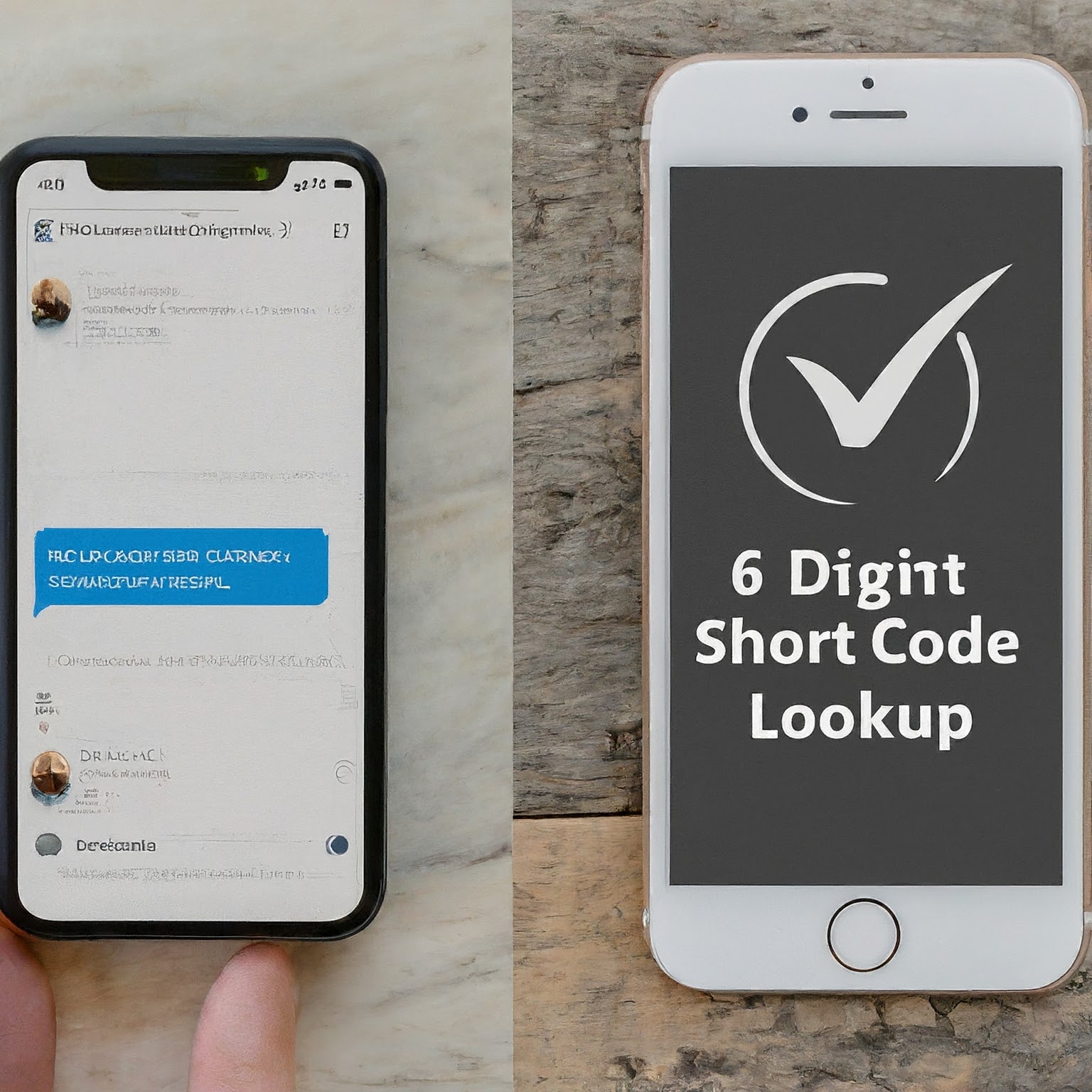In the ever-evolving landscape of mobile marketing, 6-digit short codes have emerged as powerful tools for businesses and organizations to communicate directly with their target audience. These short codes, often seen in text message campaigns, can be mysterious to those who receive messages from them. This comprehensive guide will delve into the world of 6-digit short code lookup, explaining their significance, how they are used, the benefits they offer, and the steps you can take to identify and manage messages from these shortcodes.

What Are 6-Digit Short Codes?
6-digit short codes are abbreviated phone numbers specifically designed for sending and receiving text messages (SMS) and multimedia messages (MMS). They are a popular alternative to traditional 10-digit phone numbers, primarily due to their brevity and ease of use. Shortcodes are typically used by businesses and organizations for various marketing and communication purposes, such as:
- Promotional Campaigns: Short codes can be used to send mass text messages about new products, services, or special offers.
- Contests and Sweepstakes: Businesses often use short codes to enable customers to enter contests and sweepstakes via text message.
- Alerts and Notifications: Short codes can be used to send important alerts or notifications, such as flight confirmations, appointment reminders, or delivery updates.
- Two-Factor Authentication (2FA): Many online services use short codes to send verification codes for 2FA, an added security measure to protect user accounts.
Why 6-Digit Short Code Lookup Matters
6-digit short code lookup refers to the process of identifying the company or organization associated with a specific short code. This is crucial for several reasons:
- Verification of Legitimacy: With the rise of spam and phishing scams, it’s important to verify the legitimacy of a short code before interacting with it. Short code lookup helps you determine if the sender is a trusted entity.
- Understanding Message Purpose: By looking up a short code, you can understand the types of messages you can expect to receive from it. This allows you to make informed decisions about whether to engage with the messages or unsubscribe from the service.
- Managing Your Subscriptions: If you no longer wish to receive messages from a particular short code, a lookup tool can provide instructions on how to opt-out or unsubscribe.
- Reporting Spam and Abuse: If you receive unsolicited or abusive messages from a short code, a lookup can help you identify the source so you can report it to your carrier or the appropriate authorities.
How to Perform a 6-Digit Short Code Lookup
There are several ways to conduct a 6-digit short code lookup:
- Online Directories: Various online directories specialize in short code information. Some popular options include:
- US Short Code Directory: This comprehensive directory provides details on registered short codes in the United States.
- TextMarks: TextMarks offers a user-friendly search tool for short codes and their associated businesses.
- SMS Archives: This platform allows you to search for specific messages sent from short codes.
- Carrier Websites: Many mobile carriers have their own short code directories on their websites. Check your carrier’s support page or contact their customer service for more information.
- Third-Party Apps: Several mobile apps are designed for 6-digit short code lookup. These apps often offer additional features like spam filtering and message blocking.
Best Practices for Using 6-Digit Short Code Lookup
- Verify the Information: Always cross-reference the information you find on multiple sources to ensure accuracy.
- Be Cautious of Unfamiliar Short Codes: If you receive a message from an unknown short code, exercise caution before interacting with it.
- Report Spam: If you receive spam or unwanted messages from a short code, report it to your carrier and the relevant authorities. This helps to protect yourself and others from potential scams.
- Manage Your Subscriptions: Keep track of the short codes you’ve subscribed to and unsubscribe from any services you no longer want. This will help you reduce the number of unwanted messages you receive.
Benefits of 6-Digit Short Codes for Businesses
6-digit short codes offer numerous benefits to businesses:
- Memorable and Easy to Use: Shorter than traditional phone numbers, making them easier for customers to remember and engage with.
- Increased Customer Engagement: Short codes facilitate interactive communication, allowing businesses to run contests, polls, and surveys to engage their audience.
- Targeted Marketing: Businesses can segment their audience based on demographics or interests, enabling them to send targeted messages that are more likely to resonate with recipients.
- Cost-Effective: Short code messaging can be a cost-effective alternative to traditional marketing channels, especially for reaching a large audience.
Challenges and Considerations for Businesses
While 6-digit short codes offer significant advantages, there are some challenges and considerations for businesses to keep in mind:
- Compliance: Businesses must comply with regulations set by the Common Short Code Administration (CSCA) and the Cellular Telecommunications Industry Association (CTIA). This includes obtaining carrier approval, adhering to messaging guidelines, and providing clear opt-out mechanisms.
- Spam and Abuse: The misuse of short codes for spam or fraudulent activities can damage a business’s reputation and lead to penalties. It’s essential to use short codes responsibly and implement measures to prevent abuse.
The Future of 6-Digit Short Codes
While 6-digit short codes remain a popular tool for mobile marketing and communication, the landscape is constantly evolving. Emerging technologies like Rich Communication Services (RCS) may offer more interactive and engaging alternatives in the future. However, short codes are expected to remain relevant for their simplicity and widespread adoption.
Conclusion
6-digit short code lookup is an invaluable tool for anyone who receives text messages from short codes. By understanding their purpose, how to use lookup tools, and following best practices, you can protect yourself from scams, manage your communication preferences, and engage with businesses and organizations safely and effectively.


